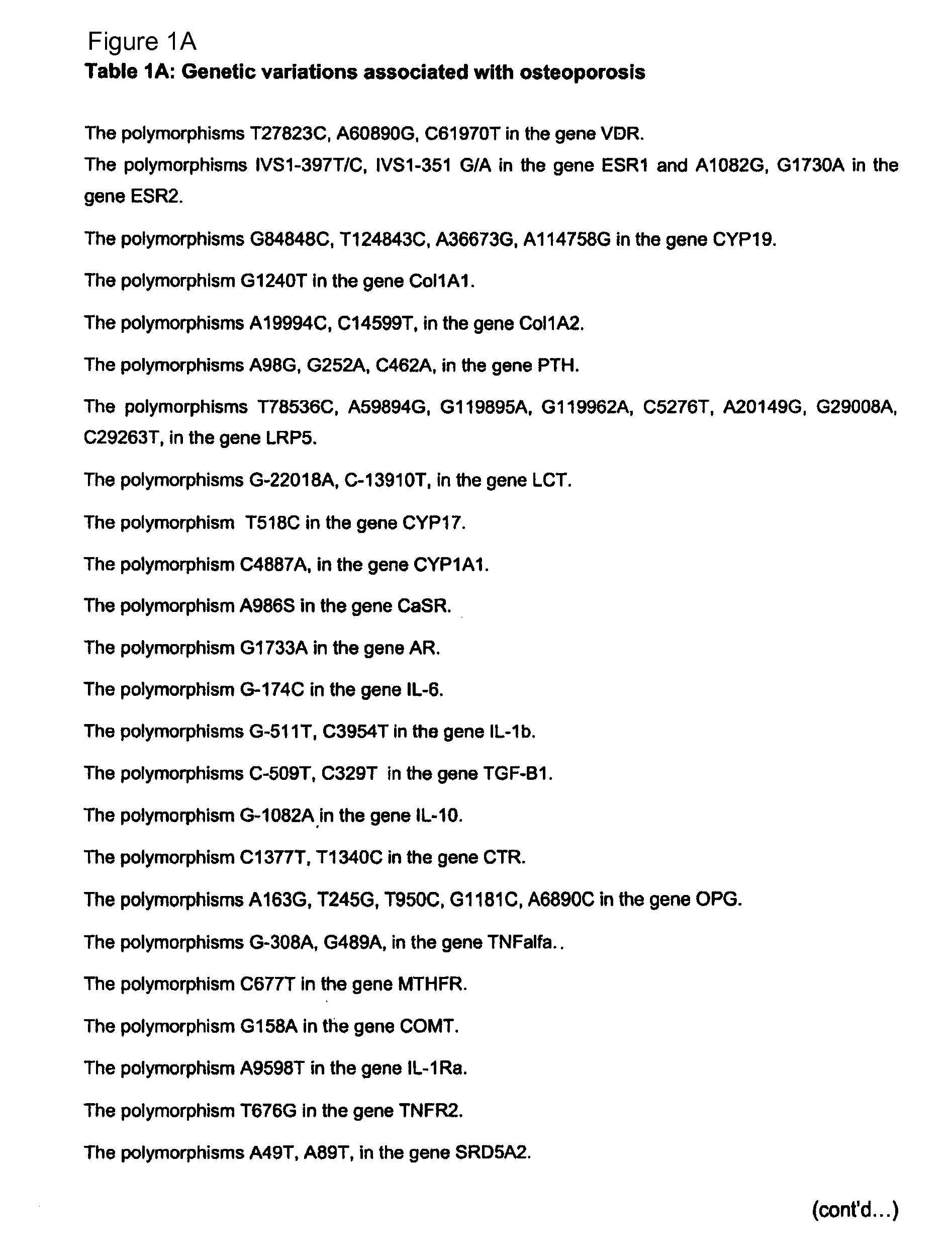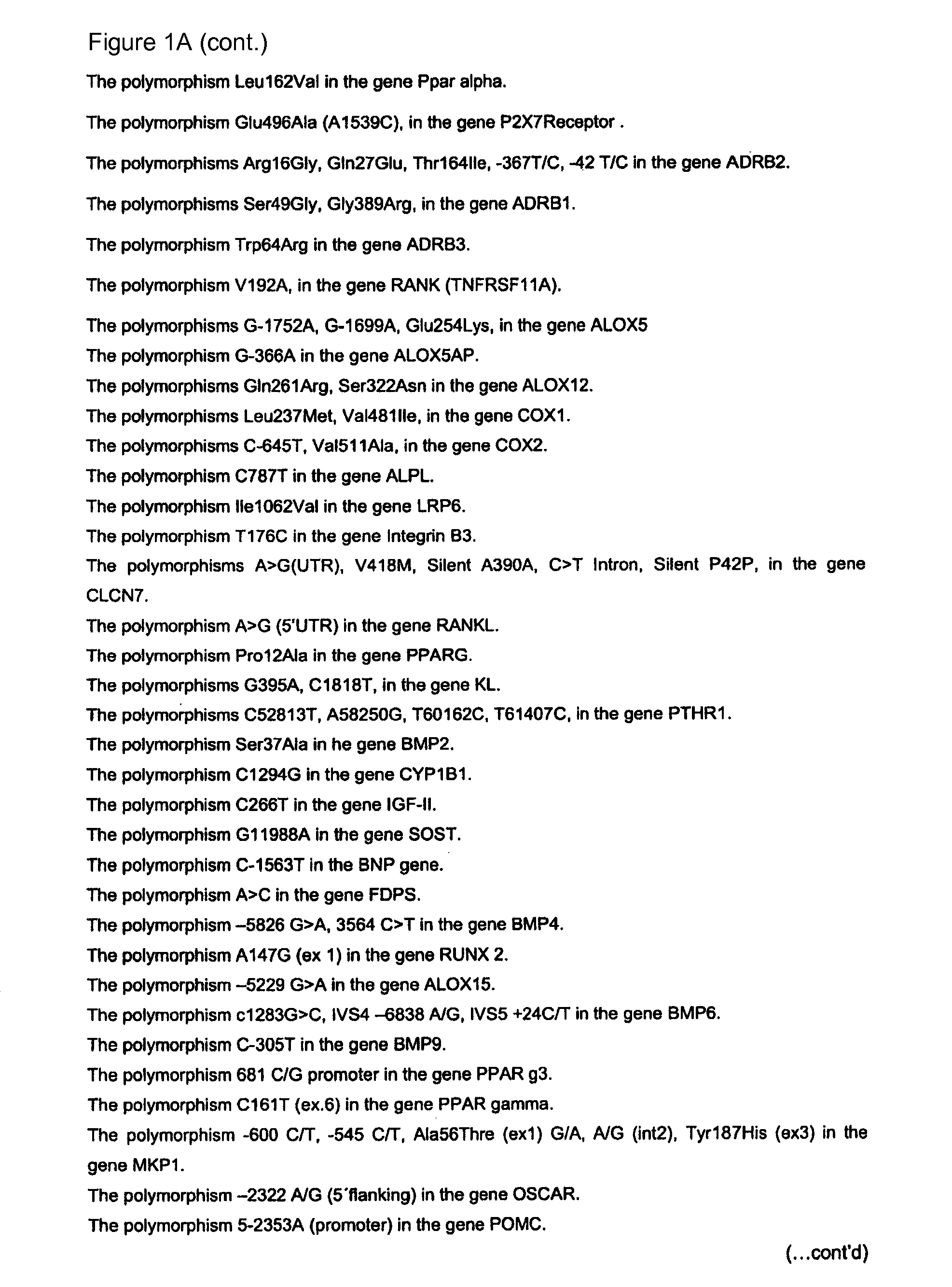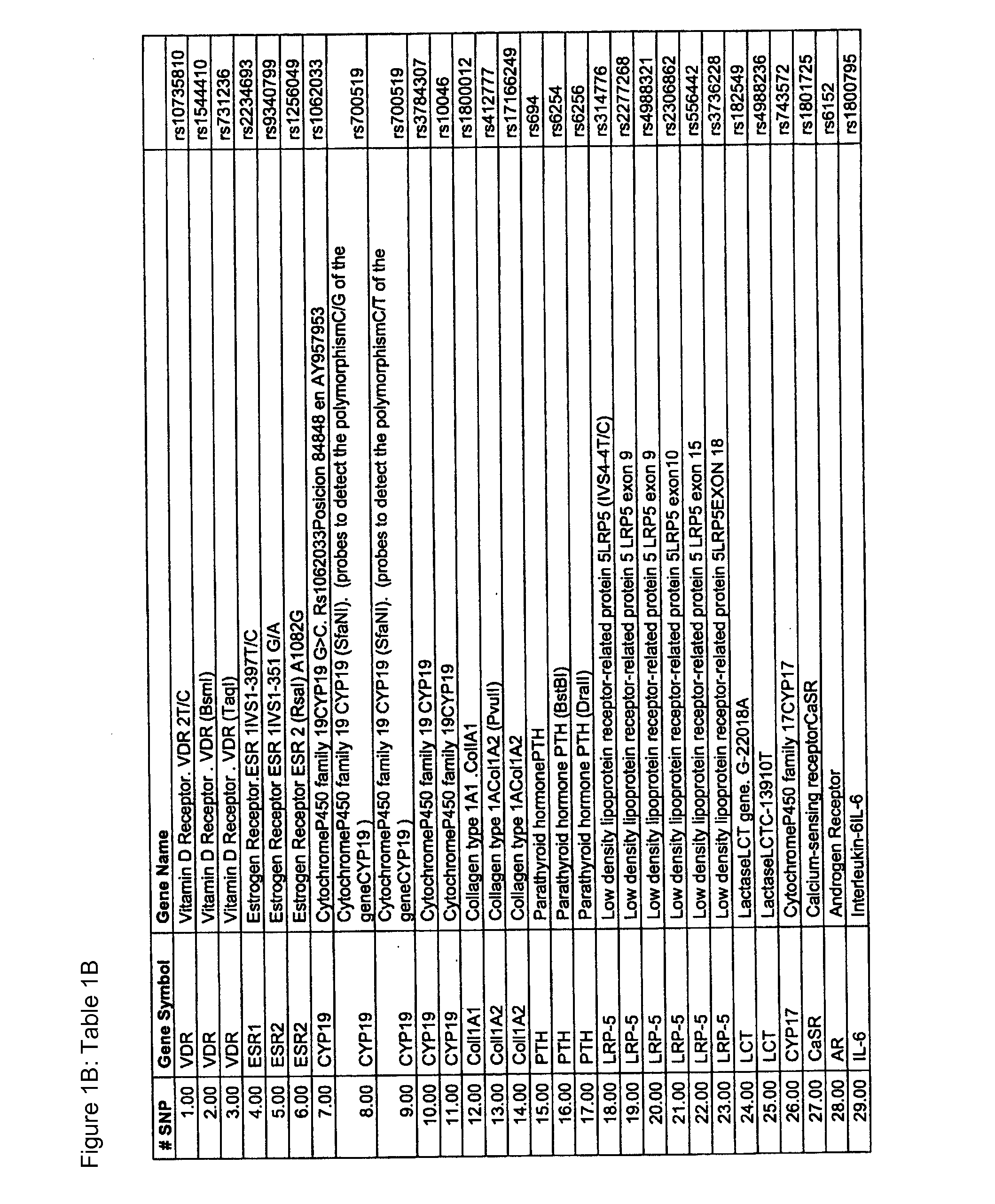Diagnostic method
a diagnostic method and microarray technology, applied in the field of microarrays, can solve the problems of increased risk of fracture of hip, spine (vertebrae), wrist, bone fragility and increased risk of fracture, and loss of quality of life and independen
- Summary
- Abstract
- Description
- Claims
- Application Information
AI Technical Summary
Benefits of technology
Problems solved by technology
Method used
Image
Examples
example 1
Detection of Osteoporosis Associated Human Genetic Variations Using a DNA-Chip According to the Invention (Osteochip)
1.1 Design of the DNA-Chip for Genotyping Osteoporosis Associated Genetic Variations
[0519]A DNA-chip to detect human genetic variations associated with osteoporosis which permits simultaneous, sensitive, specific and reproducible detection was designed and manufactured. The said genetic variations are related to a greater or lesser risk of suffering from osteoporosis, a better or worse response to treatment and also a better or worse prognosis of the disease. Illustrative examples of human genetic variations associated with antigens connected to osteoporosis which can be determined using this DNA-chip are shown in Tables 1A and 1B.
[0520]The DNA-chip designed and manufactured consists of a support (glass slide) which shows a plurality of probes on its surface that permits the detection of genetic variations previously mentioned. These probes are capable of hybridizing ...
example 2
Establishing Models for Predicting Osteoporosis Phenotypes Patients and Methods
2.1. Selection of Patients
[0546]A cohort of 904 postmenopausal Italian women and elderly Italian men and 125 consecutive patients with non-traumatic fractures were selected. BMD (spine-LS, hip-FN and hand) and other phenotypes relevant to the pathogenesis of osteoporosis, such as ultrasound properties of bone, bone volume, bone turnover (bone alkaline phosphatase and serum CTX), PTH and sex hormone levels were evaluated. Besides, Osteoporosis diagnosis was made on the basis of WHO criteria on the basis of BMD (Tscore+Zscore). Hip, vertebral, wrist and other kind of fractures were already registered. Age, menopause age, menarche age, gender, smoking habits, weight, height, and physical exercise were also considered as covariates.
[0547]Clinical characteristics of the cohort and patients included in the present study are shown in FIG. 4 (Table 4).
[0548]The medical-ethics committee of Policlinico Santa Maria ...
example 3
Providing Further Models for Predicting Fractures of the Wrist, Hip or Spine (WSHfractures Phenotype)
[0624]Using chemical data and genomic DNA samples from the same population as in Example 2, the inventors carried out a further study of fractures.
[0625]In this study, vertebral, femoral and wrist fractures were grouped together as a single phenotype. Thus, in this study, positive fractures were considered as wrist, spine and hip non-traumatic fractures. The aim was to compare fractures occurring in any of these three places as opposed to fractures occurring anywhere else in the body.
[0626]The population was genotyped by the same method as in Example 2, but using the probes in Table 2C and the primers in Table 3C (thus incorporating the optimised probes of Table 2B and optimised primers of Table 3B, compared to the Example 2 study).
[0627]Statistical analysis was carried out as in Example 2, except where indicated below.
[0628]Three different approaches were carried out. The first one ...
PUM
| Property | Measurement | Unit |
|---|---|---|
| temperatures | aaaaa | aaaaa |
| temperatures | aaaaa | aaaaa |
| melting temperature | aaaaa | aaaaa |
Abstract
Description
Claims
Application Information
 Login to View More
Login to View More - R&D
- Intellectual Property
- Life Sciences
- Materials
- Tech Scout
- Unparalleled Data Quality
- Higher Quality Content
- 60% Fewer Hallucinations
Browse by: Latest US Patents, China's latest patents, Technical Efficacy Thesaurus, Application Domain, Technology Topic, Popular Technical Reports.
© 2025 PatSnap. All rights reserved.Legal|Privacy policy|Modern Slavery Act Transparency Statement|Sitemap|About US| Contact US: help@patsnap.com



